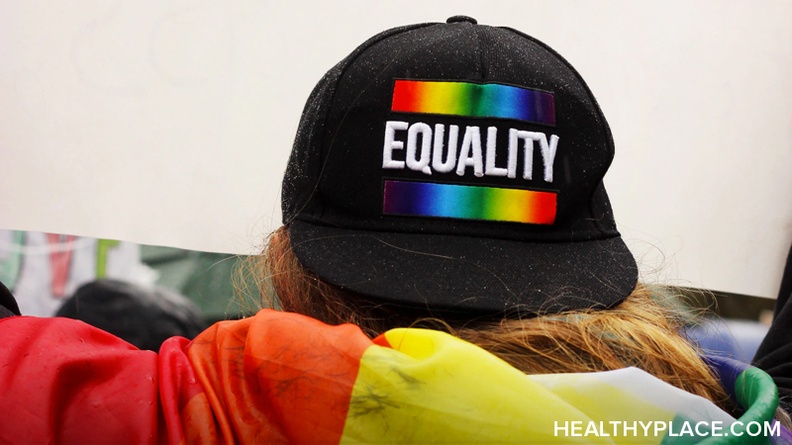Proper Pronoun Usage in the LGBTQIA+ Mental Health Community

Pronoun usage in the lesbian, gay, bisexual, transgender, queer, intersex, asexual, etc. (LGBTQIA+) community is important when dealing with mental health concerns. Using proper pronouns when speaking to others about their mental health can provide a safe and comfortable space for them to release their emotions.
In several of my own experiences with mental health professionals, the pronouns used when speaking to or about me are based on assumptions. My outward appearance and choice of gender non-conformity seem to sway mental health professionals into using the pronouns he/him as opposed to she/her. Here are a couple of ways to avoid improper pronouns when talking to individuals in the LGBTQIA+ mental health community.
Pronouns Are Often Assumed in the LGBTQIA+ Mental Health Community
Pronouns in this context refer to the language used when speaking about or to a certain individual. These are gendered words like he, him, she, her, etc.
My preferred pronouns are she/her. When someone talks about me to others or speaks to me in conversation, these are the pronouns I prefer. That is because I identify as a female.
Some individuals might not physically or vocally fit the conventional image of male or female. These societal norms must be challenged, as assumptions of gender identity can be offensive and close-minded. It can also lead to pronoun assumptions based on how certain individuals dress, what their voices sound like, or how they might have been referred to in the past.
Therapists have sometimes called me "sir" or used he/him pronouns toward me due to my appearance. I dress in more masculine clothing and have a short, masculine haircut. These assumptions about my gender identity have led to embarrassing moments of using improper pronouns on my medical charts and when speaking to me personally.
However, these assumptions can be avoided by asking curious, open-minded, thoughtful, and appropriate questions.
Pronoun Questions in the LGBTQIA+ Mental Health Community
I have been involved personally and professionally with the LGBTQIA+ mental health community for over a decade. No one has ever asked me outright which pronouns I prefer. I usually share my pronouns early in the conversation, which allows for individuals to use them properly. When working with and speaking to a friend or client, proper pronoun usage can determine whether that person will open up emotionally or shut down. Cultural bias can lead to assumptions, but appropriate and conscious questions can help to dismantle that bias.
If you are unaware of another individual's pronouns, then share your own pronouns and ask which pronouns they prefer. This creates space for both of you to be seen based on the gender identity of choice. This also eliminates the awkward mistake of using improper pronouns in the conversation.
When speaking to someone you know personally, who might have recently adopted different pronouns, ask before assuming. If you are close enough with this individual to be aware of a possible gender identity change, you are close enough to ask about proper pronoun usage.
Members of the LGBTQIA+ mental health community are entitled to proper preferred pronoun usage, as well as the comfort within a space to feel seen in their own gender identity. Asking questions about proper and preferred pronouns, then avoiding assumptions can provide the safety someone needs when dealing with a mental health-related issue.
What helps you feel most comfortable with regard to pronoun usage and the LGBTQIA+ mental health community? What questions help you feel more secure and seen? Leave your responses in the comment section below.
APA Reference
Nolasco, M.
(2021, February 11). Proper Pronoun Usage in the LGBTQIA+ Mental Health Community, HealthyPlace. Retrieved
on 2025, December 26 from https://www.healthyplace.com/blogs/thelifelgbt/2021/2/proper-pronoun-usage-in-the-lgbtqia-mental-health-community